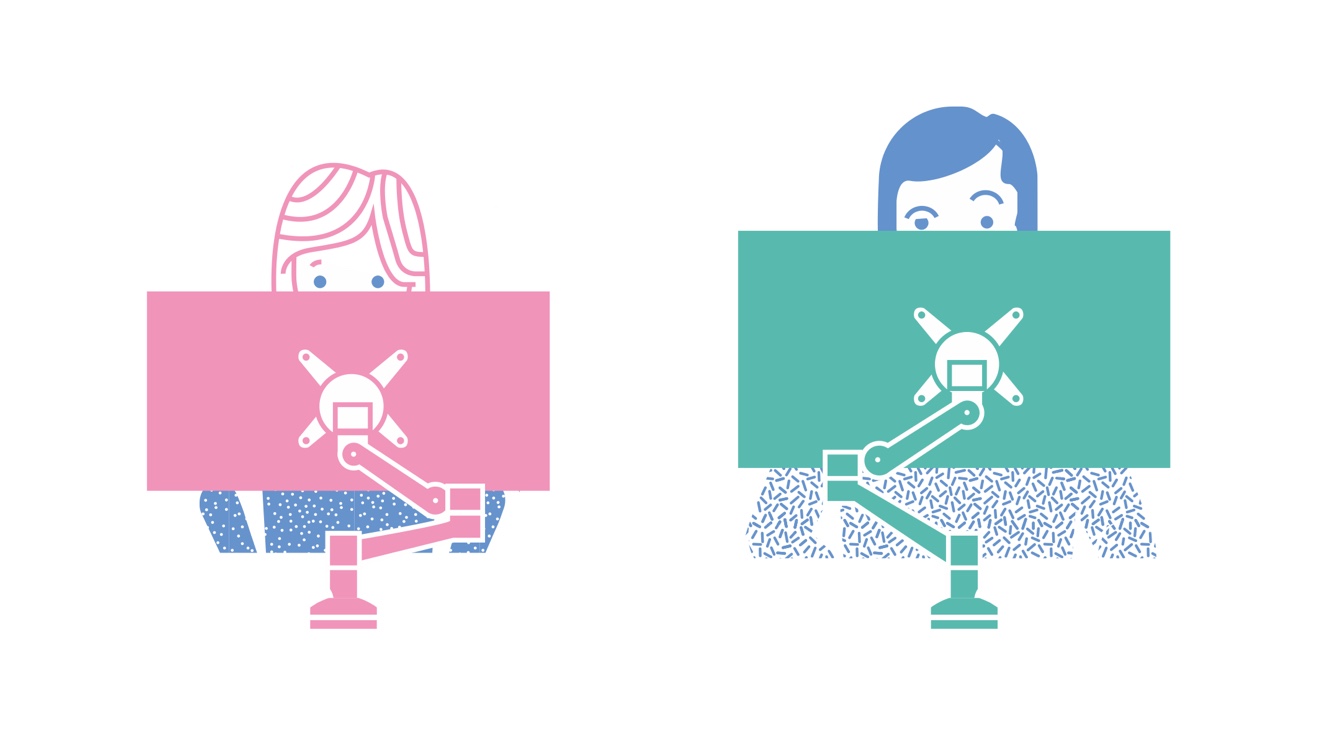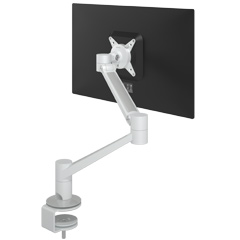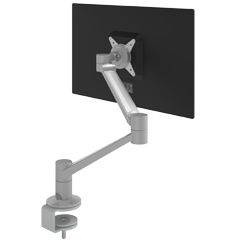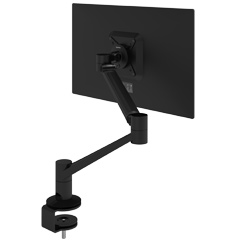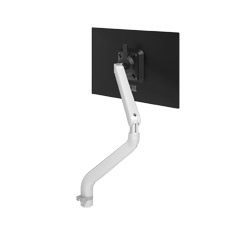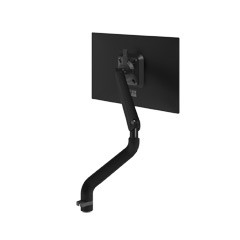The importance of an ergonomic workplace
If you think an ergonomic workplace sounds like some passing fad, think again. Creating an ergonomic workplace, or healthy building as it’s sometimes called, is simply about ensuring that employees can perform optimally, while helping them avoid unnecessary work-related injuries or illness. Light, air, temperature, noise, visual stimuli — they all affect how well we can concentrate on our work, how quickly we become tired and how likely we are to get ill or injured. An ergonomic workplace therefore affects the bottom line of any business.
Still sceptical? Research suggests that an ergonomic workplace can be 10-15% more productive than an unhealthy one and victim to 1.5-2.5% less absenteeism. Here we explain why an employer who doesn’t take steps to ensure that every employee enjoys the benefits of an ergonomic workplace is at best short-sighted, and at worst in danger of breaking Health & Safety legislation that could see them saddled with an expensive lawsuit and serious damage to the company’s public reputation and employer brand value.
This Quick Guide gives a whistle-stop tour of the important areas to look out for with an ergonomic workplace, as well as our Top 10 Do’s & Don’ts Tips to make sure you’re working in a healthy workplace.
Why should you bother to create an ergonomic workplace?
An ergonomic workplace or healthy building — and maybe even more important, an unhealthy building — impacts both on the way people perform when they’re at work and the way they feel about being at work. In other words, ergonomics impacts the bottom line of your business and goes to the very heart of your work culture. This raises 2 key questions for any employer:
Are the ergonomics in your workplace having a positive or negative impact on how you perform as a business?
What does the extent to which we ensure — or fail to ensure — that our people work in an ergonomic workplace say about us as a caring employer?
Wake-up call: 3 statistics that should convince you it’s time for an ergonomic workplace health check.
RSI
RSI (Repetitive Strain Injury) is a serious condition brought on by repeatedly making the same movement, for example through continuous typing). It is a typical unhealthy symptom of an apparently risk-free work activity, and a major source of long-term illness. According to the European Agency for Safety & Health at work (EU-OSHA), over 60% of Dutch people run the risk of RSI-related injuries. While the U.S. Department of Labor, Occupational Safety & Health Administration (OSHA) confirms RSI affects 100,000s of US workers, and costs US companies more than $20 billion a year in worker compensation.Sick leave
34% of all sick days are the result of physical symptoms of a poor ergonomic workplace. The Dutch Central Bureau for Statistics (CBS) reports that on any given work day more than 1% of all employees are absent from work due to a poorly designed workplace.Back and muscle complaints
A major European study found that 35% of employees reported that their work affected their health, 24% reporting back pains and 22% muscular pains.
The 4 cornerstones of an ergonomic workplace: light, temperature, fresh air and ambient noise.
Light
What do we mean by good light? In an ergonomic workplace, light lets you see what you need to see to do your work without straining your eyes even a little. The right light means no annoying glare on your screen, you can read documents properly and don’t get tired eyes from too bright or insufficient light or contrast. Headache, blurred vision, dry and irritated eyes are common symptoms of poor workplace lighting.Technically, it’s all about how many lux (the measurement unit for light) there is in the workspace. Research shows that 1000 lux can enhance productivity, while 500-1000 lux is seen as the ‘stress-free zone’ conducive to a truly ergonomic workplace.
Temperature
Finding the perfect temperature can be difficult. Research confirms that most of us are at our most productive when it’s about 20°C. The trouble is, some people are used to warmer temperatures and find this uncomfortably cold. Many find 27°C the most comfortable temperature, but productivity is then far lower. So for the perfect ergonomic workplace it’s a question of finding the optimal balance between productivity and comfort within the 21- 27°C range. As so often with an ergonomic workplace, it’s all about tailoring the environment to the particular needs of those using it.Fresh air
Overcrowding and poor maintenance of heating and ventilation systems are the 2 main causes of poor air quality. Leading to the following familiar litany of symptoms in an unhealthy office workplace: colds, headaches, irritability, fatigue and dizziness. Never nice and certainly not part of a productive, ergonomic workplace.Room humidity should be between 30-60%. Air circulation is also critical for productivity and sickness. Research has shown that when the amount of fresh air circulated through an office rose from 40m3 to 80m3 cubic meters per hour, productivity increased by 2% and short-term absenteeism dropped by an astounding 35%!
Sound
Legally, permitted noise levels in an office vary from country to country. In the Netherlands it shouldn’t exceed 45 decibels; in the UK it’s 55 decibels. But when you consider that a quiet classroom full of students produces 40 decibels, those maximum levels are not very high.Many employers try to offer employees quiet areas with low noise level so they concentrate. Ergonomic products that help include special sound-absorbing partitions or even separate quiet rooms for working on that particularly tricky report or making an important phone call.
Does an ergonomic workplace really make a difference?
You better believe it! One study found that if each employee could regulate their own workplace for temperature and air circulation alone, it would increase productivity by up to a staggering 12.5%! Just one more reason to have a look through our top tips.
Our Top Tips: 10 Do’s & Don’ts to creating an ergonomic workplace.
Get the light right
As well as the tips in the section on Light above, to avoid glare and reflections ensure an appropriate contrast between the ambient room light and your computer display.Freshen up
Making sure there’s enough air in a room can be as simple as opening a window or a door. Apart from anything else, raise people’s awareness of the link between feeling drowsy or getting headaches and air circulation, so they remember to check that there is sufficient air circulating at all times.Go green
Research suggests that having plants in an office can increase productivity by up to 15%. It has a positive physical and psychological impact on an ergonomic workplace, as hospitals know all too well: patients who can see trees from their bed are reported to recover quicker.Sounds sensible
For the same reasons soft-material partitions help reduce noise as we explain under Sound tips above, placing plants around your office can also absorb noise, further reducing levels by a few decibels. While a room with only hard surfaces has a sharp, unpleasant acoustic that works against creating an ergonomic workplace.Art is good for you
Another soft material is a canvas painting. Moreover, hanging art up in your office (making sure the canvas isn’t covered by glass!) can also create a feeling of well-being and a sense that your employer appreciates that you’re not robots and wants to create a pleasant work environment.Right temperature
As discussed above, the optimal temperature to balance productivity and comfort lies between 21- 27°C. Though, as Abraham Lincoln pointed out, you can’t please all of the people all of the time, this topic is actually the perfect way to engage everyone in the importance of an ergonomic workplace, by having them mutually agree a solution in each workspace for setting the temperature. That could be my perfect temperature in the morning and yours in the afternoon; or a compromise temperature all day that works for both of us. But whatever the answer, the important thing is to get people involved. Awareness and engagement are half the battle when it comes to achieving an ergonomic workplace.Help people get moving
To avoid employees sitting in the same position all day, encourage them to stand up regularly. Produce a simple low-key exercise guideline they can use to stretch appropriately. Suggest that when making a phone call, they stand up and move around. They could also occasionally walk upstairs to talk to people instead of emailing them. And why not put up a prominent sign encouraging people to take the stairs instead of the lift.Use ergonomic products
As well as ensuring everyone has what we refer to as the ‘golden triangle’ of an ergonomically efficient desk, ergonomic chair and ergonomic monitor stand — and the right set-up between the three — also introduce other ergonomic products for everyone, such as ergonomic keyboards, ergonomic mice, monitor arms and laptop stands.Introduce sit-stand tables
Another great aid to an ergonomic workplace is the sit-stand table. A sit-stand table can be easily raised so you can stand as you work for a while and then lowered again to sit. The variation alone gives you a nice little boost of energy. So not only are you working ergonomically, it can also help get you through that all-too-familiar mid-morning or mid-afternoon energy dip.Brainstorm
Share ideas and ask employees what they feel would make their office a truly ergonomic workplace. Write up an action list of the ideas that can be introduced and send everyone the timetable for implementation.
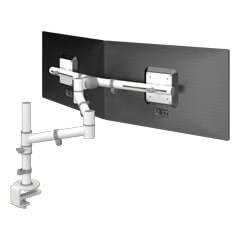 48.130
48.130
Viewgo monitor arm - desk 13
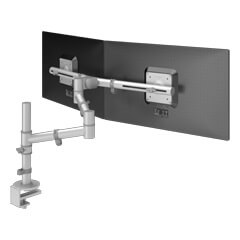 48.132
48.132
Viewgo monitor arm - desk 13
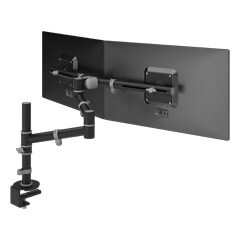 48.133
48.133
Viewgo monitor arm - desk 13
 51.388
51.388
Addit laptop riser - adjustable 38
 48.130
48.130
Viewgo monitor arm - desk 13
 48.132
48.132
Viewgo monitor arm - desk 13
 48.133
48.133
Viewgo monitor arm - desk 13
 51.388
51.388
Addit laptop riser - adjustable 38
 48.130
48.130
Viewgo monitor arm - desk 13
 48.132
48.132
Viewgo monitor arm - desk 13
 48.133
48.133
Viewgo monitor arm - desk 13
 51.388
51.388
Addit laptop riser - adjustable 38
To discuss how we can help you create an ergonomic workplace, contact us.
